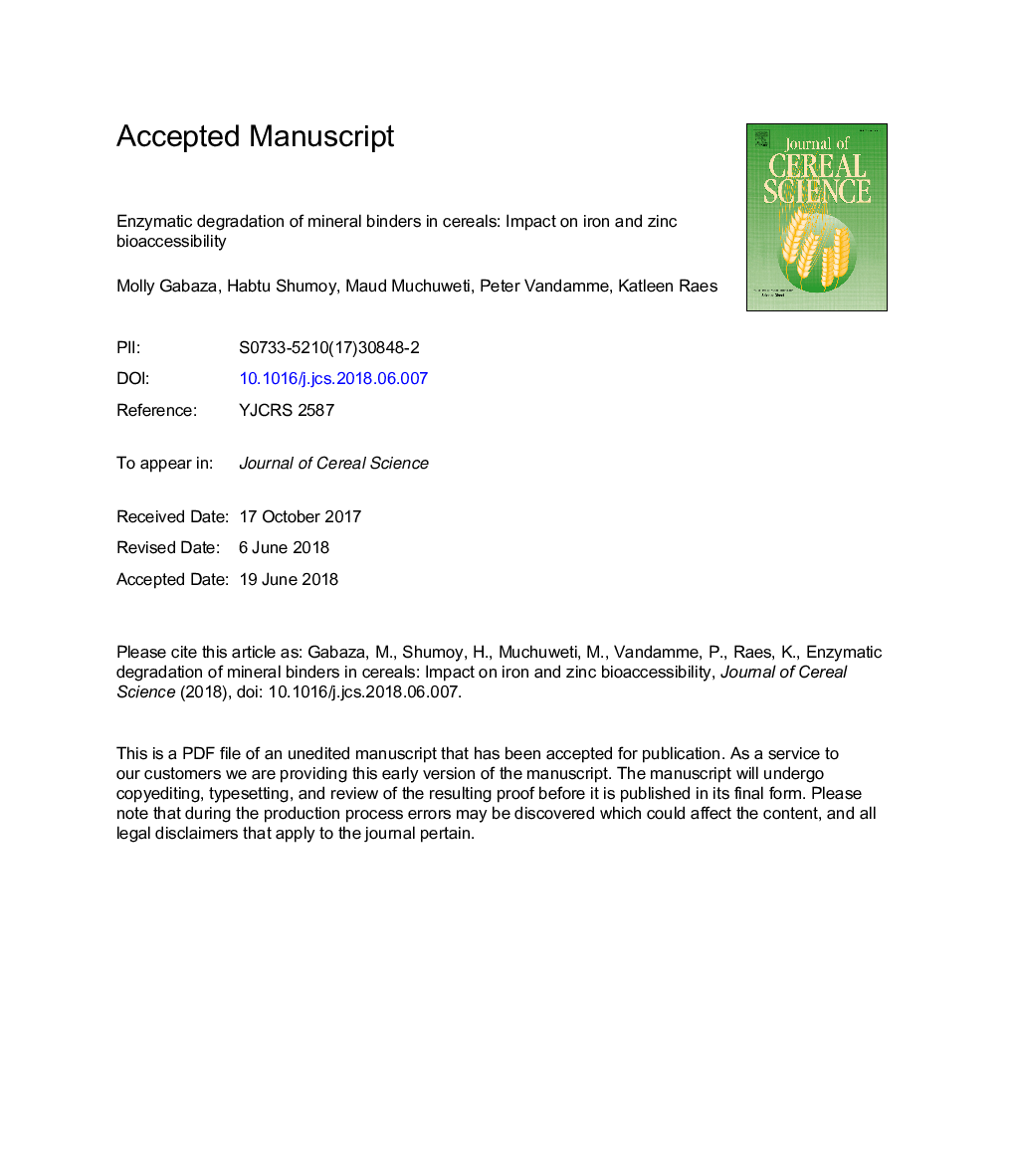| کد مقاله | کد نشریه | سال انتشار | مقاله انگلیسی | نسخه تمام متن |
|---|---|---|---|---|
| 8881335 | 1624880 | 2018 | 30 صفحه PDF | دانلود رایگان |
عنوان انگلیسی مقاله ISI
Enzymatic degradation of mineral binders in cereals: Impact on iron and zinc bioaccessibility
ترجمه فارسی عنوان
تخریب آنزیمی از مواد معدنی در غلات: تأثیر بر فعالیت زیستی آهن و
دانلود مقاله + سفارش ترجمه
دانلود مقاله ISI انگلیسی
رایگان برای ایرانیان
کلمات کلیدی
2′-deoxymugineic acidSNDDMAGAEICP OES - ICP YESIron - آهنInductively coupled plasma optical emission spectrometry - اسپکترومتر نوری نوری پلاسما به صورت القایی متصل شده استgallic acid equivalents - اسید گالیک اسید معادلTannase - تانزاCondensed tannins - تانن های متراکم یا تانن های فشردهPhenolic compounds - ترکیبات فنولیNET - خالصBioaccessibility - دسترسی بیواسطهZinc - فلز رویPhytase - فیتازPhytic acid - فیتیک اسید، هگزوفسفات اینوزیتولLaccase - لاکاس یا لاکازdry matter - ماده خشکcatechin equivalents - معادله کاتچینNicotianamine - نیکوتیانامینPellet - گلوله
موضوعات مرتبط
علوم زیستی و بیوفناوری
علوم کشاورزی و بیولوژیک
علوم زراعت و اصلاح نباتات
چکیده انگلیسی
Successful strategies to improve iron and zinc bioaccessibility of cereals can only be realized based on a thorough understanding of the mineral to mineral binder interactions. Therefore, exogenous enzymes were used i.e. phytase and a multiple enzyme system comprising of phytase, laccase and tannase (PÂ +Â LÂ +Â T) to degrade phytic acid and phenolic compounds in order to understand the magnitude of their effects on iron and zinc bioaccessibility of cereals commonly consumed in Africa. Bioaccessibility was defined as the proportion of minerals able to pass through a dialysis membrane of 12-14Â kDa molecular weight cut-off while total soluble minerals were the sum of soluble minerals able to pass through the dialysis membrane and non-dialyzable minerals. Phytase treatment caused an increase in total soluble zinc from 20.2-59.4 to 29.5-67.6%. A positive effect on the total soluble iron from 23.9-65.5 to 48.7-87.3% was only observed after treatment of cereals with PÂ +Â LÂ +Â T. The bioaccessibility of iron and zinc was reduced after both phytase and PÂ +Â LÂ +Â T treatments, possibly because of interactions between the minerals and the exogenous enzymes. Nevertheless, phytic acid and phenolic compounds have an effect on iron and zinc bioaccessibility but depending on the type of cereal, dietary fibers may also be important.
ناشر
Database: Elsevier - ScienceDirect (ساینس دایرکت)
Journal: Journal of Cereal Science - Volume 82, July 2018, Pages 223-229
Journal: Journal of Cereal Science - Volume 82, July 2018, Pages 223-229
نویسندگان
Molly Gabaza, Habtu Shumoy, Maud Muchuweti, Peter Vandamme, Katleen Raes,
